Even amid the immense popularity of digital platforms, direct mail continues to be an important component of many Even amid the immense popularity of digital platforms, direct mail is an essential component of many businesses’ marketing strategies. With 61% of marketers increasing direct mail investments in the last 12 months and 70% reporting improved direct mail performance, direct mail is effective and here to stay.
For many consumers, direct mail is appealing because it’s tangible. Holding physical letters or postcards in their hands makes messages more memorable and impactful, which explains why direct mail has the highest ROI for individual media (161%) despite rising postal costs.
As a marketer, you might be interested in expanding your organization’s direct mail strategies to reach a new audience. One of the best ways to quickly grow your local audience is through residential mailing lists.
In this guide, we’ll explore the ins and outs of these lists by covering:
- What Is a Residential Mailing List?
- 5 Benefits of Residential Mailing Lists
- How to Find a Reputable Residential Mailing List Provider
- Are Mailing Lists Safe for Businesses to Use?
- Best Practices for Using Residential Mailing Lists

What Is a Residential Mailing List?
Residential mailing lists, also known as Resident/Occupant, Res/Occ, or Saturation lists, are indexes of addresses within a certain ZIP code, neighborhood, or mail delivery route. Marketers use residential address lists to reach every mailable residential address within a given geographical area.
This type of saturated audience is highly effective for non-personalized, non-targeted campaigns. Residential/occupant lists are compiled from USPS® data for maximum deliverability and are updated monthly.
As a marketing professional, you can purchase these lists to reach a local audience with your outreach campaigns. You can choose the areas you want to target based on a specific mail carrier route, ZIP Code, city, county, state boundary, congressional district, or general radius.
This type of mail is often addressed to “Current Resident” rather than a consumer’s name. For example, you probably get coupons and flyers for pizza restaurants, lawn care services, and other local businesses sent to your home occasionally. Typically, that’s because your address is included in a Resident/Occupant mailing list.
Residential mailing lists can qualify for significant postal discounts. When prepared correctly and delivered using USPS Marketing Mail®, residential mailings offer significant postal discounts over First-Class Mail®.
What Is the Difference Between Residential and Consumer Mailing Lists?
Whereas Res/Occ lists only contain physical addresses, consumer mailing lists are lists of individuals. These lists include consumers’ full names and home addresses—allowing you to personalize your outreach.
Unlike residential mailing lists, which come from USPS® data, providers compile consumer mailing lists from various sources. These audiences can be based on ZIP Code, a geographic radius, and other geotargeting parameters, and you can apply demographic filters such as age, income, home market value, and more.
Ultimately, companies that want to prioritize postal discounts, geographic saturation, and high deliverability rates should purchase residential mailing lists, while businesses looking to target specific consumers should opt for consumer mailing lists.
What Are the Other Types of Mailing Lists?
There are other types of mailing lists you may leverage depending on who you’re trying to reach, such as:
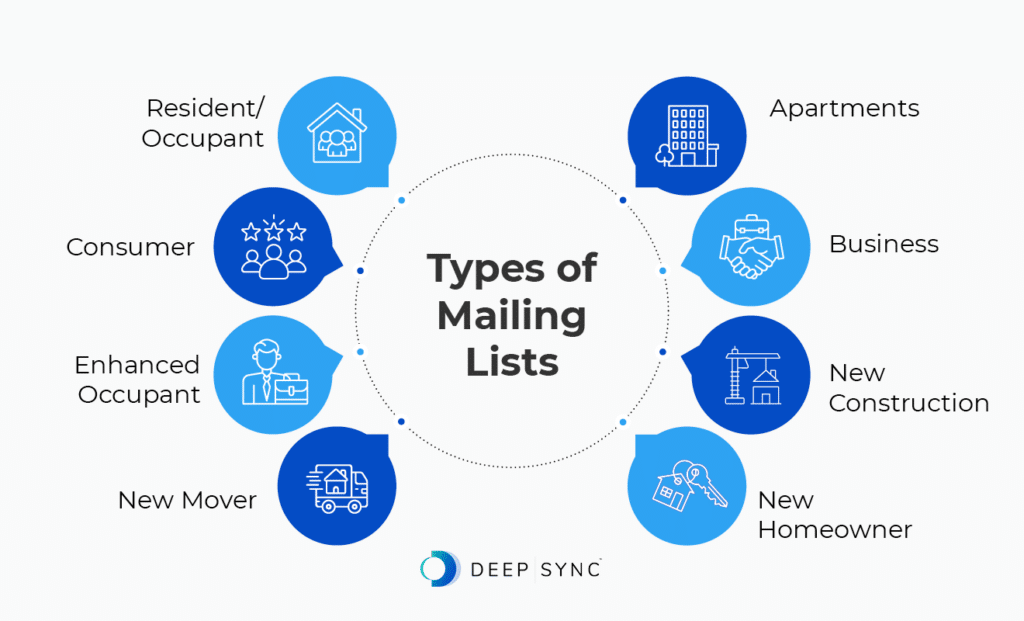
Enhanced Occupant
Enhanced occupant lists allow you to remove households that, based on factors like age or income, are less likely to respond to your offer. These lists increase the likelihood of connecting with responsive prospects while retaining the benefits of geographic saturation.
New Mover
New movers often look for restaurants and shops to visit in their new neighborhoods. New mover data and neighborhood address lists allow you to market your local business, capture their attention, and welcome them into your community.
New Homeowner
New homeowners have a variety of purchasing decisions to make within the first few months of living in their new homes, including everything from a new dishwasher to paint. You can reach these individuals and serve ads to them with new homeowner data.
New Construction
Use new construction data to reach the newest addresses in your community. You can connect with the residents of brand-new neighborhoods or apartment complexes to introduce them to the area and increase their awareness of your business.
Business
If your company conducts business-to-business marketing (B2B), B2B data can be a valuable resource to connect with target businesses. You can use criteria filters such as ZIP Code or industry to find the exact target market for your product or service.
Apartments
Since apartment communities have a high number of residents in a small geographic area, they’re an effective marketing environment for direct mail campaigns.
5 Benefits of Residential Mailing Lists
Residential mailing lists benefit your business by allowing you to:

- Reach all of the individuals within a certain radius. Using Res/Occ data ensures that your direct mail messages will reach the current residents in your target areas. Because they will typically be addressed to “Current Resident,” the materials you send these individuals won’t be returned even if the previous resident has moved.
- Establish your new business in the community. Use your direct mail campaign to raise awareness and brand recognition among local audience members.
- Reach a new market. If you’re trying to reach a new audience, such as individuals who live in certain neighborhoods or apartment communities, using Res/Occ data ensures you can market directly to those individuals.
- Cut through the digital clutter and speak directly to potential customers. Digital fatigue is real! Consumers see hundreds—if not thousands—of ads daily on social media and other digital apps. With a direct mail campaign, you can avoid the digital clutter and reach potential customers with a tangible message.
- Drive more traffic to your business. By sending local residents coupons or discounts, you can encourage them to visit your storefront or buy from your business. This can expand your business’s foot traffic and, subsequently, its revenue.
By leveraging residential mailing lists, you can power effective direct mail campaigns that reach your target audience and encourage them to engage with your business.
How to Find a Reputable Residential Mailing List Provider
By now, you may be wondering how to get a mailing list for a neighborhood. The process starts with finding the right data provider.
Before committing to purchasing a residential mailing list, ensure your data provider offers the following:
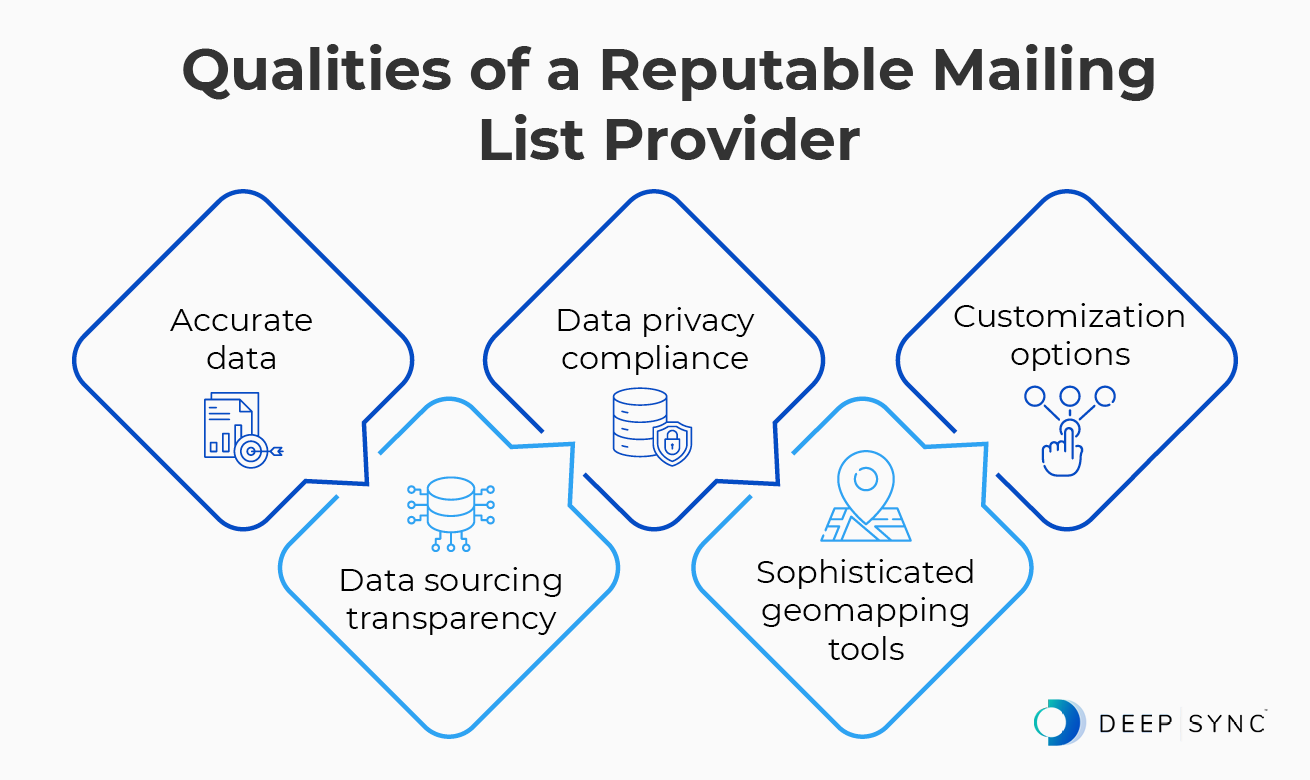
- Accurate data. Your data provider should have accurate, high-quality data sources to ensure their lists are effective. Ask potential providers how they clean and update their data to discover their approach to data quality assurance.
- Data sourcing transparency. Your provider should be forthcoming about how they source their data and the ethics behind their sourcing practices.
- Data privacy compliance. Providers should follow all relevant data privacy regulations and confirm which ones they abide by. Look for compliance markers on potential providers’ websites, such as CCPA compliance and SOC 2 Type II compliance badges, as well as a robust privacy policy. Additionally, your provider should collect opt-outs and remove consumers and businesses who request not to be contacted from their databases.
- Sophisticated geomapping tools. These tools help ensure that the location-based data you purchase is accurate and precise. Plus, they can help you identify target audiences that will meet your marketing needs. For example, Deep Sync uses mapping technology called GEO-Direct. This technology features a custom polygon tool that allows you to map out your target area and gain access to accurate addresses, demographics, mail carrier routes, and other important information.
- Customization options. Your data provider should be able to adjust their services and practices to fit your needs. Tell potential providers exactly what you’re looking to achieve, and ask how they can help you accomplish your goals.
Additionally, you’ll want to work with a provider with direct mail expertise. For instance, Deep Sync has been compiling direct mail-grade datasets for 35 years and specializes in privacy-compliant data and audience targeting solutions.
Are Mailing Lists Safe for Businesses to Use?
Yes, purchasing a residential mailing list is perfectly safe and legal for businesses. However, mailing lists are rented and must be used within a limited time frame. Unlike consumer mailing lists, which can often be purchased for multiple or unlimited uses, Res/Occ lists must be mailed within 90 days.
It’s important to note that there are a few regulations you should be aware of before acquiring and using third-party data. If you work with a data partner to acquire Res/Occ lists, ensure they comply with all the guidelines set by the Association of National Advertisers regarding the ethical use of data in marketing campaigns and any relevant local regulations.
Some of the top data regulations marketers must comply with include:
- California Consumer Privacy Act (CCPA). The CCPA is a state privacy law that gives California residents the right to know what personal data businesses collect from them, how they plan to use it, and whether they share data with third parties. Residents also have the right to access their data, request their data be deleted, and opt out of the sale of their data.
- Deceptive Mail Prevention and Enforcement Act (DMPEA). The DMPEA is a United States federal law designed to protect consumers from misleading direct mail solicitations and promote transparent direct mail practices. This law prohibits non-government entities from claiming they are part of the government and requires clear disclosures, particularly for offers involving prizes like sweepstakes and contests.
Even if your business doesn’t have physical locations in certain areas, you must comply with these regulations while mailing to residents there. For example, any business headquartered in the United States with customers living in California must comply with the CCPA.
Before buying a mailing list, ask your potential data partner about their compliance practices to ensure you only invest in ethically sourced, privacy-compliant data.
Best Practices for Using Residential Mailing Lists
Once you’ve chosen a provider and obtained your residential mailing list, it’s time to make the most of your new data. Leverage these best practices in your direct mail marketing strategy:

- Consider refining your residential mailing list data. When building your residential mailing list, your provider may allow you to omit certain types of addresses to maximize deliverability. For example, you may omit seasonal addresses in geographic areas known to have a presence of seasonal addresses.
- Personalize messages when possible. While residential mailing lists are meant for highly saturated, non-targeted campaigns, taking advantage of any opportunities for personalization can help your outreach stand out more amongst consumers. For example, consider including the town name or the address for your business’s nearest location.
- Test direct mail campaigns. Even though Res/Occ lists are non-personalized and geographically targeted, you can still experiment with your direct mail materials via A/B testing. Change small elements like headlines or images, and track response and conversion rates to see which version of your communications is most effective.
- Optimize timing. You don’t want to overwhelm recipients with too many mailings, so create a mailing schedule that spaces out mailings evenly. Keep track of key moments like major holidays and local events when your campaigns may resonate more deeply. A well-timed offer—like a lawn care promotion in spring or a back-to-school coupon in late summer—can significantly improve engagement.
- Combine direct mail and digital marketing. Did you know that when combining direct mail and digital marketing channels, 68% of marketers have experienced increased website visits, and 60% have reported increased return on investment (ROI)? Add QR codes, unique landing page URLs, or social media callouts to your mail pieces to bridge offline and online experiences, boost brand visibility, and encourage responses across platforms.
By applying these best practices to your direct mail strategy, you can maximize your investment in residential marketing lists and produce better results.

Final Thoughts
As a marketer, your local community can be the heart of your customer base. When you can connect with local audiences effectively, you can build genuine relationships with these individuals and serve your community more effectively.
Using a residential mailing list to supplement your next direct mail campaign allows you to increase brand awareness in your area and establish your business as a local staple.
If you’re ready to supercharge your direct mail campaigns, contact us to get started with residential mailing lists. For more information on effective direct mail campaigns and how mailing lists fit in, check out these additional resources:
- Navigating Postal Rate Increases with Data. As postal rates rise, optimizing marketing spend is key. Here are our recommendations to maximize ROI amid rising costs.
- Emerging Marketing Trends and Predictions. What channels will be most effective this year (and in the future)? Find out how to future-proof your marketing in this blog post.
- Purchasing and Using Consumer Lists: The Ultimate Guide. What are the benefits of using consumer data to supplement your marketing efforts? Explore this guide to find out!
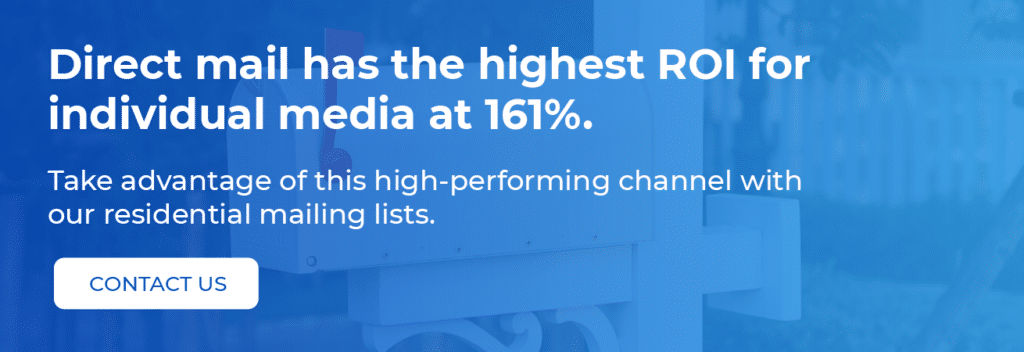


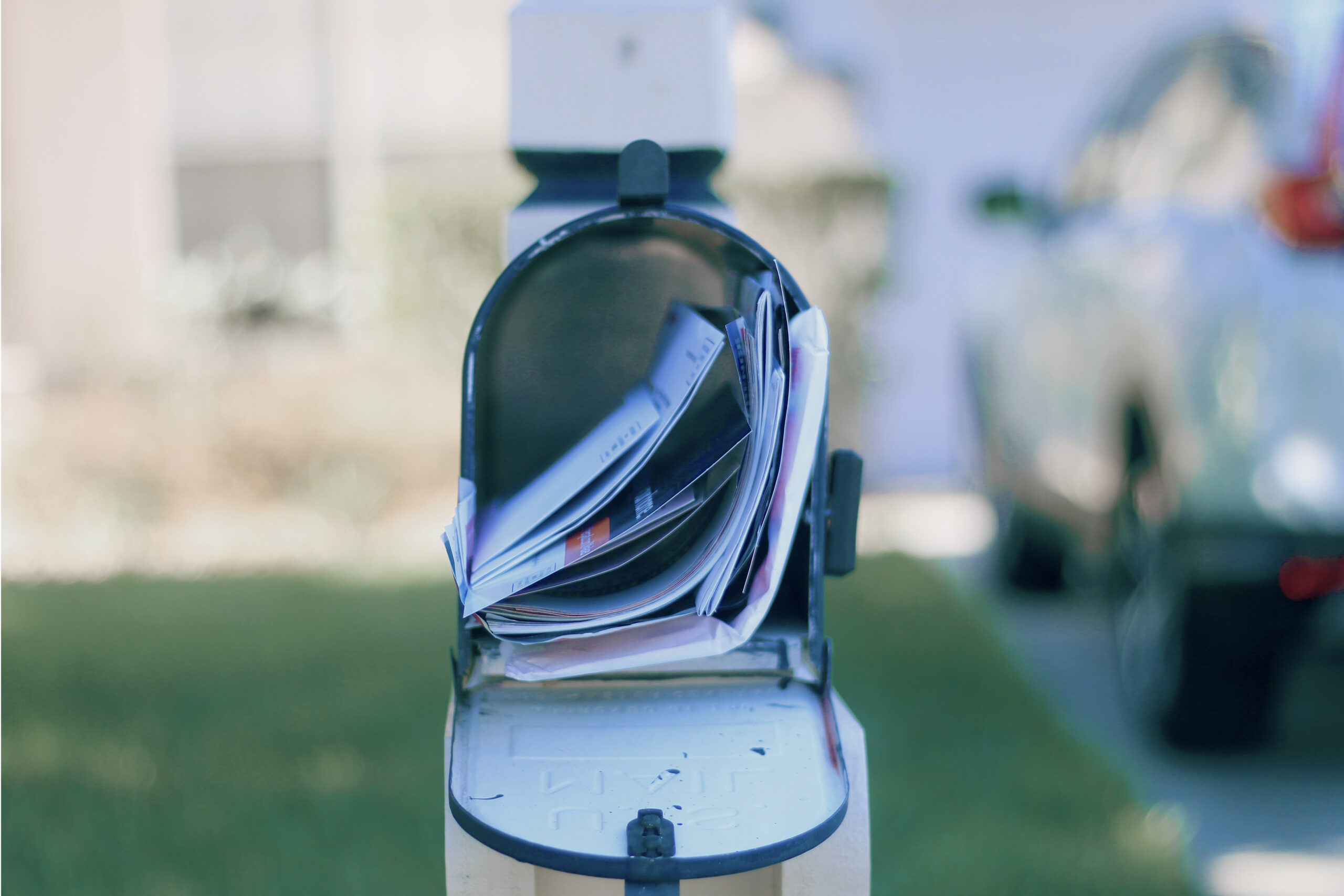








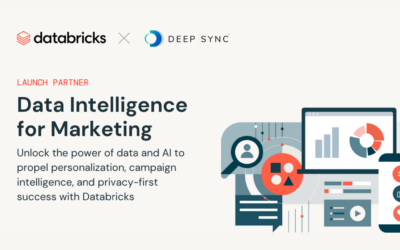

0 Comments